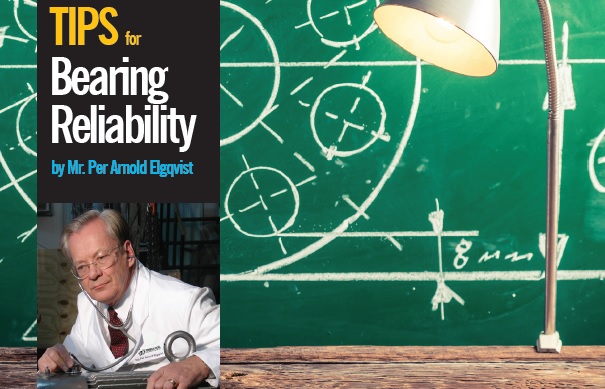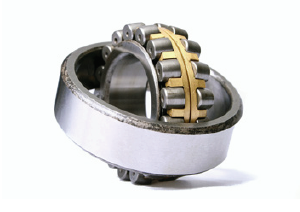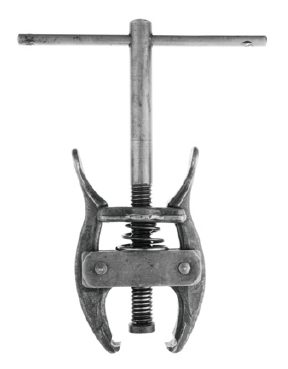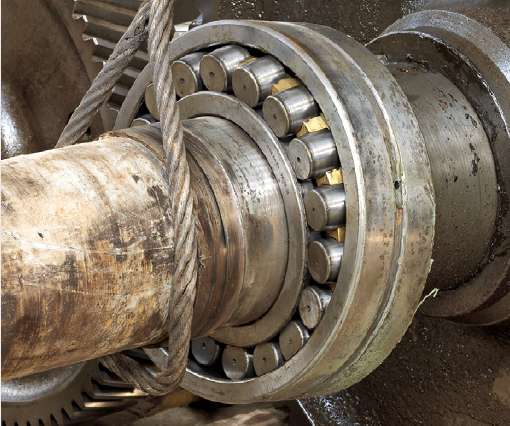
BearingTip No. 1:
“Bearings are innocent until the contrary has been proven”.
Moderns bearings manufactured by recognized quality brands most only in exceptionally cases present defects. These manufacturers apply Zero Defect strategies and defects on their products are measured only in ppm (parts per million). Earlier bearings failed based due to fatigue caused by defects in the material, the design or the manufacturing process. Today the vast majority of bearings fail due to external causes:
1. Inappropriate lubrication.
2. Wrong bearing (Type and/or Variant).
3. Contamination.
4. Misalignment.
5. Mounting damages.
6. Wrong bearing arrangement.
7. Overloading.
8. Bad quality of bearing seating on shaft and/or in housing.
9. False Brinelling.
10. Electric erosion.
Thus as the reliability of bearings no longer depends on the manufacturer we now have the opportunity to act in a positive and proactive way:
See each bearing failure as a challenge to identify the cause or causes and to determine and implement the required corrective actions to avoid the recurrence of the same failure.
BearingTip No. 2:
How long should Bearings last?
The answer to this question is of utmost importance as it will tell us if the failure of the bearing is natural or premature. If the bearing reached the recommended service life: Congratulations! Just replace it in the most professional way.
But if the bearing did not reach the recommended service life the failure was premature and a root cause failure analysis in a must in order to identify the cause or causes and to determine and implement the required corrective actions to avoid the recurrence of the same failure!
Be most careful and avoid the Workplace blindness: “This Bearing always fails every 10 months”!
The leading bearing manufacturers indicate recommended guidelines for bearing lives for typical applications, like for example: “Machines used for short periods or intermittently where high operational reliability is required………8 000 to 12 000 hours”. “Machines for continuous 24 hours use…………40 000 to 50 000 hours”.
This last recommendation means that bearings in electrical motors shall last for 5 years with a reliability of 90% (L10h) and half of the bearings may last up to 5 times the calculated life (L50h).
An example for this is that several manufacturers of high efficiency electrical motors extend guarantees for up to 7 years! This means that these motors should only be lubricated and condition monitored and not opened for 7 years.
BearingTip No. 3:

The 3 steps to the Reliability of Rolling element bearings.
Follow the 3 basic steps to achieve the required reliability of your bearings:
1. The correct bearing for each application.
Each and every application must be analyzed in detail in order to determine the optimal bearings and their precise characteristics. The correct bearing must not only take in account the bearing type and size to comply with the loads (Basic designation) but also the variant (complementary suffixes) required for the working conditions.
2. The correct mounting.
Use the correct mounting methods and tools to avoid damages to the bearings and other components of the machines.
3. The correct lubrication.
In order to assure the optimal lubricant for each application the analysis must determine at least 5 properties for the lubricant indicating the corresponding ASTM, DIN or ISO test methods and required results.
BearingTip No. 4:

“Bearings are as good as their lubrication”.
This statement is quite easy to confirm as each and every bearing fails as soon as the lubrication fails. No bearing is able to survive metal to metal contacts!
See the example below: A 241/900 spherical bearing with a weight of 3,350 kgs in a cement mill failed after only 105 hours in operation due to incorrect lubrication! It should have last for years! In this case commercial EP2 grease was used instead of the recommended special high viscosity calcium sulphonate grease.
So be it that several statistics indicate that 55% or even more of bearing premature failures are caused by inappropriate Lubrication. What an opportunity!
A totally correct lubrication must include the following:
1. The correct lubricant.
2. The correct Lubrication method/system.
3. Application in the correct place.
4. The correct quantity.
5. The correct re-lubrication.
6. The correct people performing the lubrication, with sufficient knowledge and training (= Tribologists).
BearingTip No. 5:

“Rolling element bearings must reach their mounting still being virgins”!
The best way to avoid new Bearings to be contaminated is very easy: Keep them in their original package until their mounting, unopened as virgins as in the very old days!
If new bearings still are in their original packages and the designations are original and complete and are completely in accordance with the required Bearings there is absolutely no need to open the packages until the moment when everything is ready for their mounting.
We have always known that contamination “very much” reduces bearing life. But we did not know what “very much” was until year 2000 when the ISO 281 formula included the contamination factor.
The effect of contamination exceeded our worst ideas! I use to show 2 examples in my courses: The bearing life calculated utilizing this formula for a deep groove bearing heavily contaminated as it was unpacked exposed to all the usual particle contamination of a repair shop and used for the measurements in the workshop to repair shaft and housing which means exposed to possible handling
damages besides the contamination. This bearing is given the contamination factor of 0.1! As comparison an unopened bearing with the cleanliness direct from factory assigned the factor of 0.8. The calculated life was increased 12 times for the second bearing! And what was the cost for this enormous benefit? None at all!

 Industry News
Industry News


